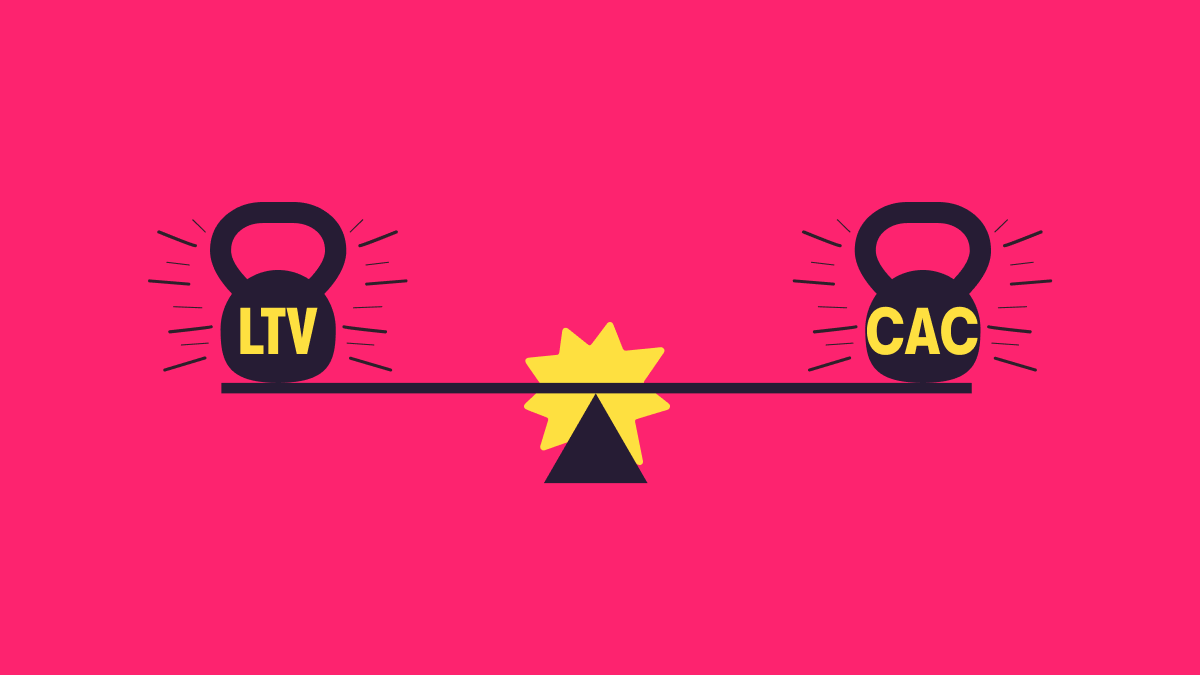Seven strategies for boosting sales productivity
How are your sales reps using their time? Are they spending most of their days hitting the phones, cold emailing prospects, and hosting product demos? Or are they losing the bulk of their time on non-sales tasks?
If you’re like most sales organizations, the latter scenario probably rings a bell. Rest assured, you and your team are not alone. A lot of sales teams spend more time than they should on non-sales activities.
If you want to solve this, you need to make your sales team more productive.
Sales productivity can be hard to pin down and improve. But we’re here to help solve that. This article will show how you can define sales productivity, calculate it, and improve it. Let’s begin.
What is sales productivity?
Sales productivity can be rather hard to define. It could mean different things to different sales teams if you get into specifics. But, speaking broadly, sales productivity is about closing more sales with the same amount of resources — things like time and money.
That means sales productivity measures how efficient and effective your sales executives are. Let’s break these terms down further.
You can think of sales efficiency as your team’s input variable. It’s the number of resources they use to complete a task. For instance, you can measure the efficiency of your reps by the number of calls they make in a day. Assuming they aren’t spending longer at work, reps that make more calls are more efficient.
Of course, just because they are making more calls doesn’t mean your reps are necessarily progressing sales or generating revenue. That’s why you also need to look at their effectiveness.
You can think of sales effectiveness as your team’s output. It’s what they do with the resources they are given. Carrying on the example above, measuring the number of meetings booked due to those cold calls is a measure of your team’s effectiveness. They become more effective if they book more meetings with the same number of cold calls.
To maximize productivity, your team needs to be both efficient and effective. That means increasing outputs while decreasing inputs. For instance, sales productivity will increase if your team makes more cold calls in less time (increasing efficiency) while booking more meetings (increasing effectiveness).
How to calculate sales productivity?
Unlike other sales metrics (customer lifetime value, deal win rate, and sales cycle length), there’s no specific way to calculate your team’s sales productivity.
Instead, you have to use the relationship between sales efficiency and effectiveness I’ve described above to calculate sales productivity in a way that works for you. That relationship can be turned into a formula in the following way:
Sales productivity = sales effectiveness (output) / sales efficiency (input)
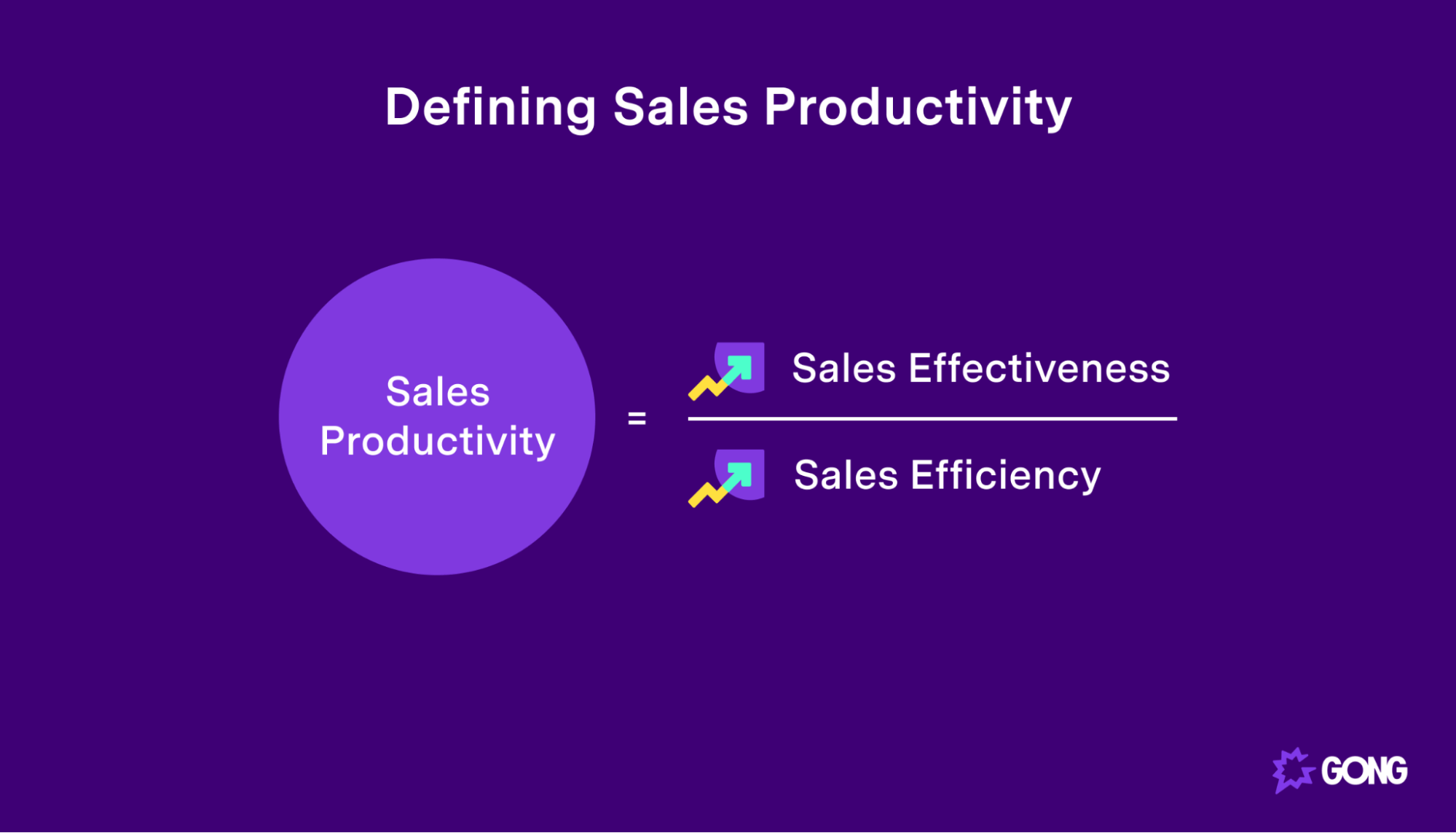
Let’s carry on the example of productivity from above (booking meetings from cold calls) to turn this formula into a specific calculation. We’d get the following:
Sales productivity = number of meetings booked (the output) / the number of cold calls made (the input)
So if your sales team made 2000 calls in a week and booked 20 meetings, they’d have a sales productivity ratio score of 0.01. Put another way; they’d have a calls-to-meetings conversion rate of 1%.
They can improve their sales productivity by booking more meetings, thereby increasing the output. If they book 40 meetings, their score increases to 0.02 (2% of calls result in meetings)
They can also improve productivity by booking the same amount of meetings with fewer calls. If they book 20 meetings from only 1000 calls, their score also increases to 0.02.
But what if your sales team increases their meetings booked while also decreasing the number of calls made? If they book 40 meetings from just 1000 calls, their score increases to 0.04 (or 4% of calls ending in meetings).
You can also use the calculation to quantify the productivity of your sales team in terms of revenue:
Productivity = total revenue/no. of sales staff
So if you generate $100,000 over a quarter with a team of ten, you have a sales productivity calculation of $10,000 per rep.
How to increase sales productivity
Now that you know what sales productivity is and how to calculate it let’s look at how to increase your team’s productivity without making them work longer hours.
1. Define how you measure sales productivity
As we’ve shown above, you can measure your team’s productivity in sales in several ways. To start improving their productivity, you need to define what it means to you.
If you don’t have an idea of what you want to measure yet, consider these common metrics:
- Revenue per salesperson
- Individual sales revenue
- Number of bookings made
- Number of deals closed
2. Track KPIs to identify weak points in your sales process
Once you’ve defined the kind of sales productivity you wish to improve, you need to know how best to improve it. That means improving your team’s effectiveness (increasing their output) or making them more efficient (reducing their input). Ideally, you’ll do both.
Lead and lag KPIs are a great way to see which parts of your sales process need to be improved. Depending on the definition of sales productivity you outlined in step one, you may consider tracking the following metrics:
- Activity metrics like calls made, emails sent, and demos provided
- Time spent selling
- Average lead response time
- Average deal size
- Length of the sales cycle
- Opportunities lost
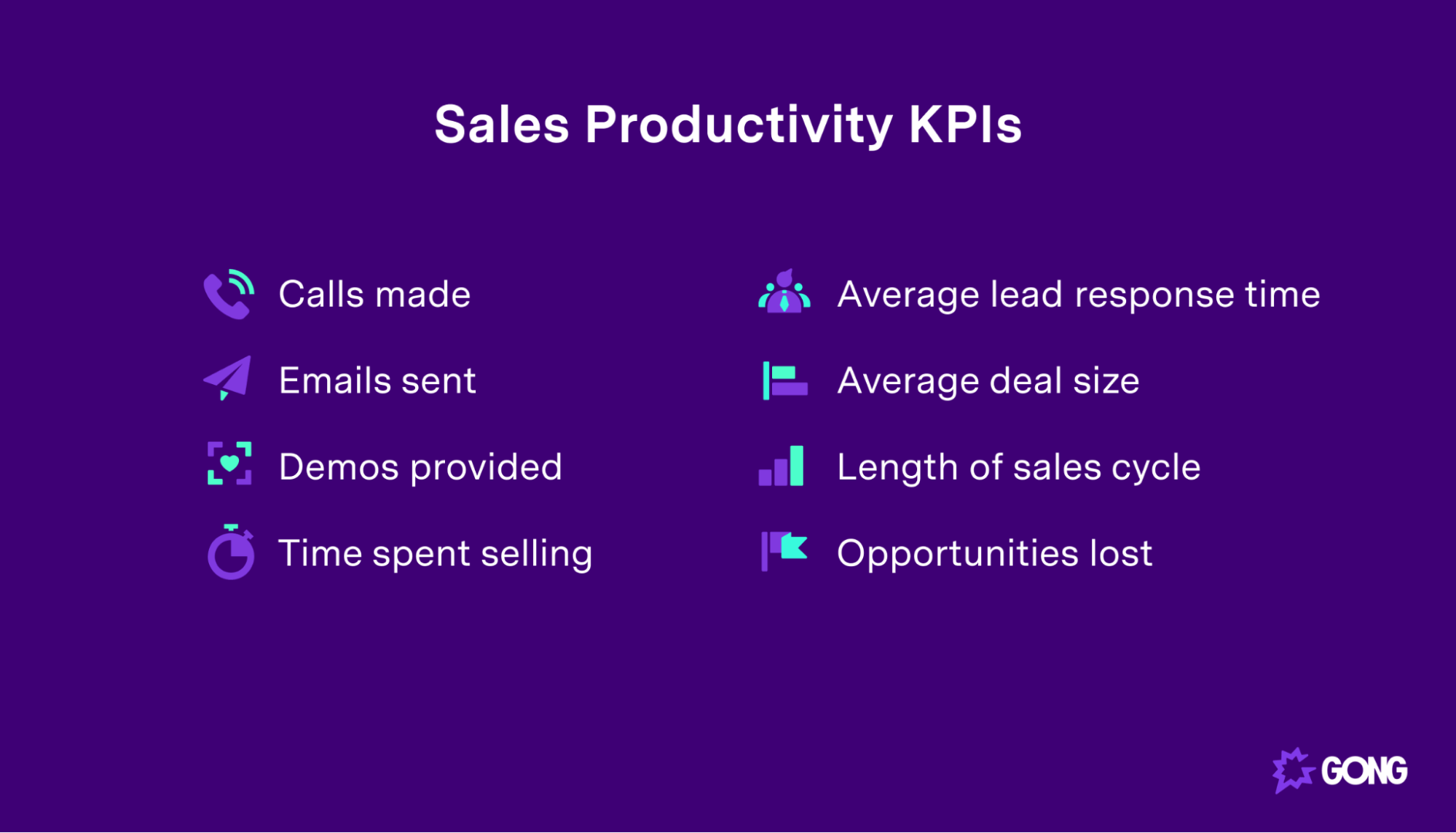
Be careful about putting too much emphasis on low-activity metrics like calls made or emails sent. Using only them to measure a sales rep’s performance can lead to them artificially inflating these numbers. That serves no purpose. Instead, ensure you are using them in relation to high-impact metrics like demos provided or closed deals.
By tracking these KPIs, you may realize your team is making some basic errors, like not making enough calls or not spending enough time selling. You may also identify reps with a longer sales cycle than others, hampering their productivity.
3. Create a consistent sales process
The best way to improve almost all the above metrics is to create a consistent sales process. A sales process is a list of steps your reps need to take to convert a prospect to a buyer. A clear sales process is essential because the only difference between a productive and unproductive sales rep is what they do with their time.
One way to create a consistent sales process is to identify the steps taken by your best sellers and encourage everyone else to adopt them.
Another is to use the 12-step sales process we’ve created based on cold, hard data. Below is a preview of the steps:
- Prospecting
- Schedule your meeting
- Prepare for the meeting
- Build rapport
- Discover your prospect’s needs
- Remove competition from the process
- Sell your company
- Present your offering
- Handling objections
- Sell as a team
- Close
- Language
But make sure to read the article for more detail.
4. Automate manual tasks
Your sales reps spend more of their time on non-selling activities than they do selling. Tasks like updating CRMs, recording activities, and planning the day eat away your reps’ time and make them unproductive.
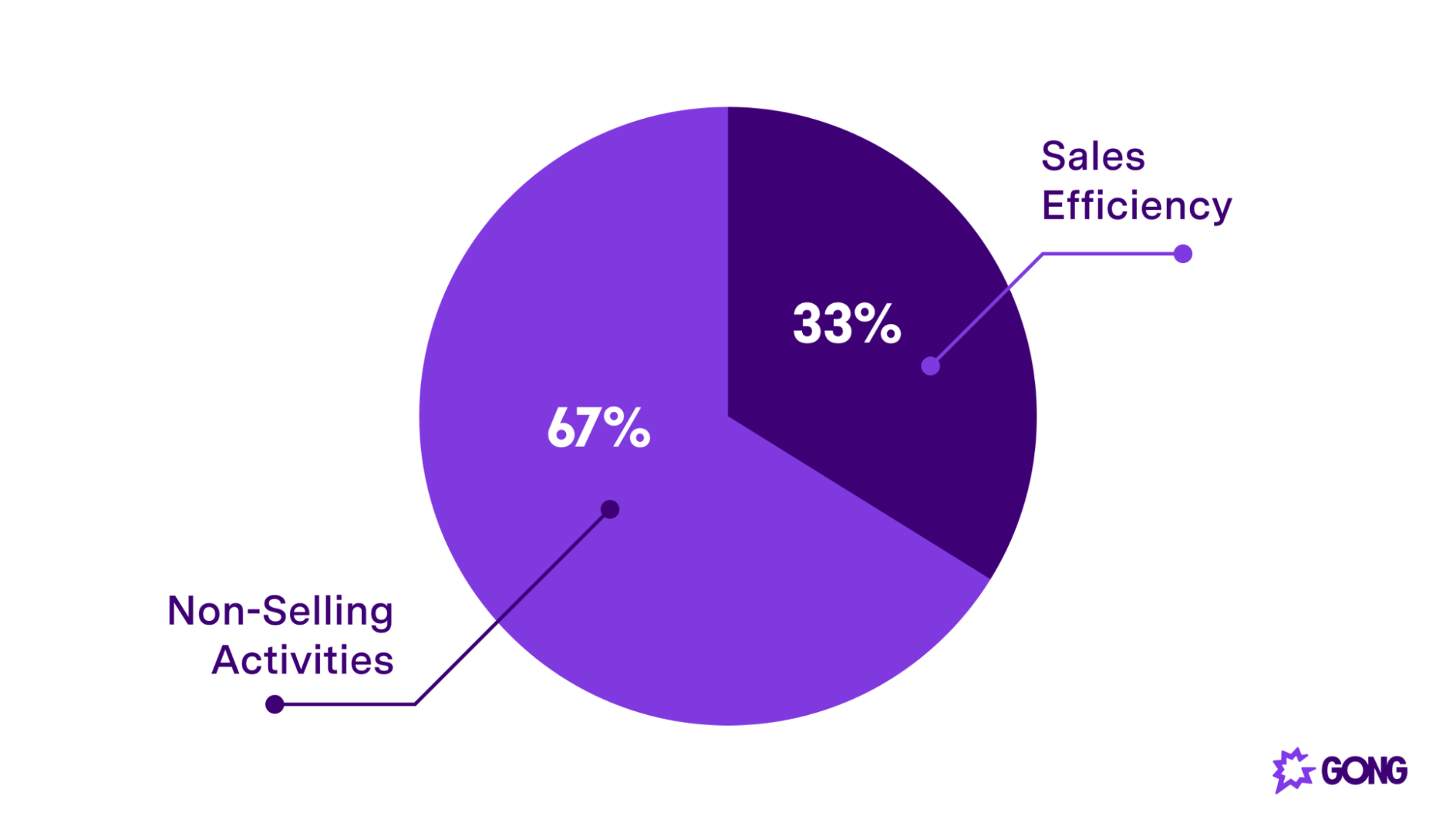
Luckily, you can fix this by automating manual tasks. Many administrative tasks can be automated with a CRM or by connecting two or more sales productivity tools with a sales automation platform.
Alternatively, you can use Gong Assist to automate low-value tasks while getting recommendations for revenue-generating next steps. For instance, Gong will remind reps that they need to send a pre-meeting email, but it will also automatically draft that email and create the meeting invite. If the same rep hasn’t heard back from the prospect in the days running up to the meeting, Gong Assist will also flag that and recommend that the rep re-engage the prospect.
You don’t have to invest in sales tools to reduce the time reps spend on administrative tasks. Encouraging them to batch activities like prospecting or making sales notes can streamline their day and give them more time to focus on selling.
5. Improve your employee onboarding process
The faster you can get new hires up to speed, the sooner they’ll be able to contribute to the pipeline and meet your sales goals. This is essential to improving sales productivity, especially if you measure it in revenue per sales rep.
But rushing your training process isn’t the answer. Your onboarding should be more than a one-week crash course in sales. That’s why we’ve created a 30-60-90-day onboarding guide that any sales team can use to train new reps.
Training isn’t finished after 90 days, however. All of your sales reps need regular reminders and coaching sessions to continue improving — especially if you want them to meet your sales process.
Save time by using a tool like Gong to identify your reps’ problem areas and fix them quickly. For instance, you can use Gong to identify which reps are talking too much and which reps aren’t talking enough.
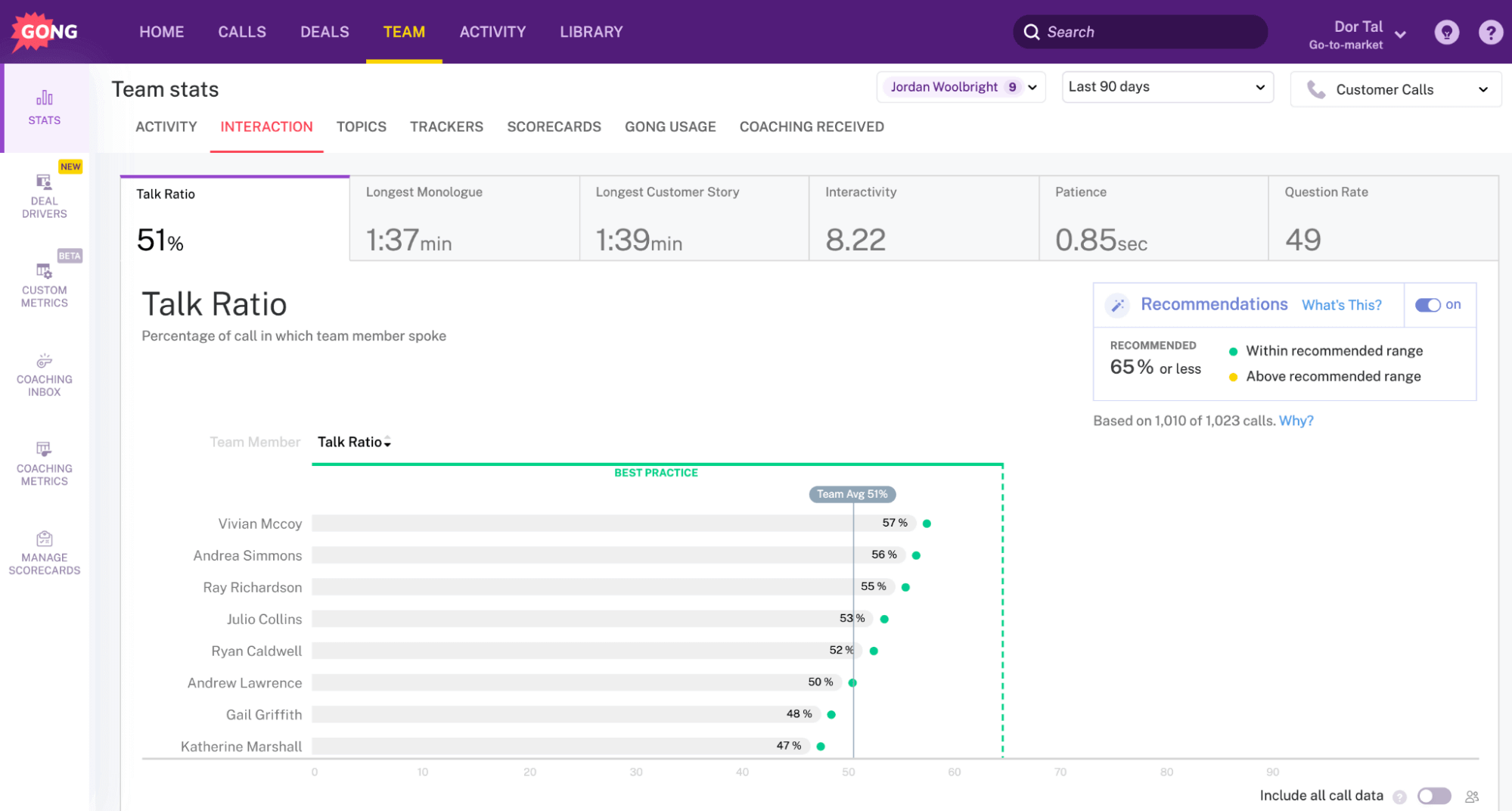
Our analysis shows that the ideal talk-to-listen ratio is 43:57. If your reps speak more than they are listening, they need a coaching session ASAP.
6. Use proven sales templates
If your current sales process isn’t driving the productivity results you want, it may be time to equip your team with tried-and-tested sales templates.
There’s no need to reinvent the wheel when your team can use sales templates that have been proven to drive results. Best of all, you can find a sales template for almost every part of the sales process.
Here are just a few of the sales templates you could use:
- Sales emails
- Sales pipeline
- Battle cards
- Sales presentation
- Sales proposal
- Sales deck
- Sales tracking
Or, if you want all of the best sales processes, we’ve compiled the 20 best sales templates of all time.
7. Use sales tools
Adding additional resources to your sales process may seem like it would make your team less productive at first. After all, you’re increasing their resources and thus decreasing their efficiency. But the power of tools to automate parts of the sales process, dramatically improve engagement, and shorten sales cycles means they can make your team more productive in sales.
Unfortunately, most teams lack the tools they need to succeed. Nor are sales managers. Only half of sales managers feel they have the tools they need to succeed.
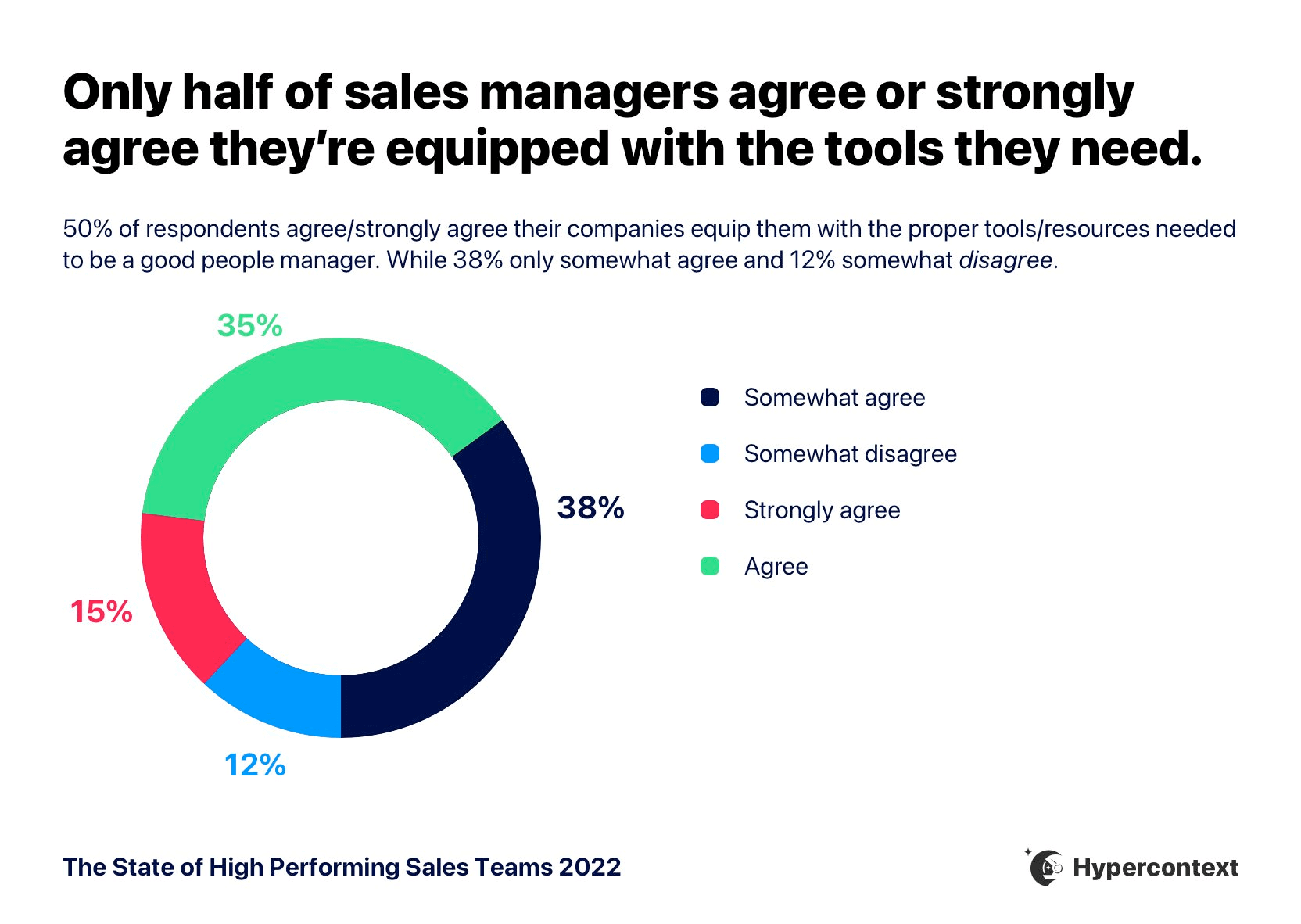
Start by evaluating your current tool stack to see which parts of the sales process they are improving, how effective they are, and how much of a rep’s time they are using. Cut tools that aren’t improving productivity but also look at adopting tools that make you more efficient.
In particular, adopt the following types of tools if you haven’t already.
- A CRM
- Sales and revenue intelligence
- Sales enablement
- Call center software
The sales productivity tech space is evolving rapidly, so make sure you regularly evaluate your tool stack and look for opportunities to improve productivity.
Boost your sales productivity with Gong
If you want to improve your sales team’s productivity, you need to start by defining it. Only then can you decide on the best KPIs to track your improvement and start implementing some of the strategies above.
Whatever you do, don’t underestimate the power of sales tools. While you may think introducing another tool into the process will waste more of your and your rep’s time, the opposite is often true. A tool like Gong can give you and your team the insights to improve customer-facing conversations to get more deals over the line and speed up the onboarding of new reps. Contact us for a demo for more information on how Gong can help revolutionize your sales process.

